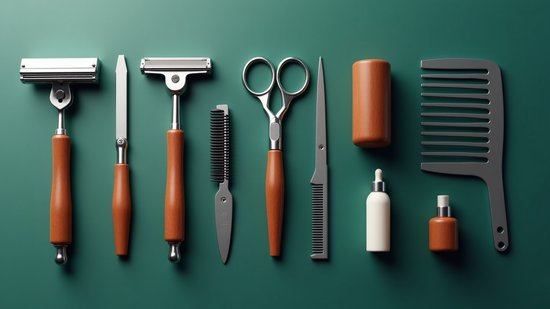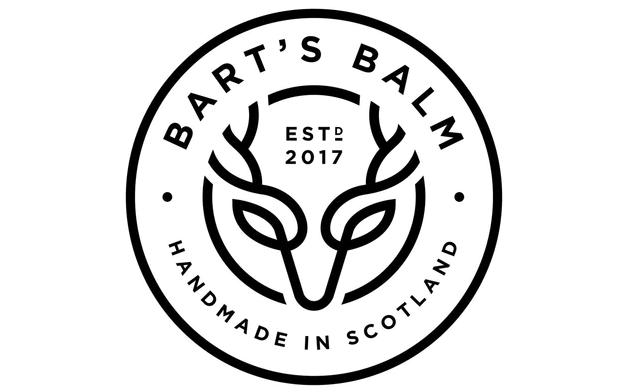In recent years, the shaving and grooming industry has undergone a significant transformation, driven by a growing demand for sustainable and high-quality products. As consumers become more environmentally conscious, the shift towards eco-luxury—combining luxury with sustainability—has reshaped the market. Today, shave-enthusiasts are not just seeking a close shave but also products that align with their values of reducing environmental impact and promoting ethical practices.
This evolution is evident in the rise of eco-friendly shaving products, from organic shaving creams to reusable razors crafted with sustainable materials. Whether it’s the allure of traditional wet shaving methods or the innovation behind biodegradable packaging, the industry is embracing a greener future. This article explores how sustainable practices are redefining luxury in the shaving world, offering insights into market trends, product innovations, and the growing appeal of eco-conscious grooming options.
Overview of the Shaving and Grooming Market
>The shaving and grooming market has evolved significantly over the years, transitioning from traditional practices to a more sophisticated and consumer-centric industry. Today, it encompasses a wide range of products, from razors and trimmers to skincare items designed to enhance grooming routines. This sector continues to grow, driven by changing consumer preferences, technological advancements, and an increasing emphasis on personal care.
Current Market Size and Projections
The US shaving and hair removal products market is currently valued at USD 8.5 billion in 2023 and is expected to expand to USD 14.4 billion by 2033. This growth, reflecting a compound annual growth rate (CAGR) of 5.4%, highlights the rising demand for grooming products. Factors contributing to this upward trajectory include the increasing popularity of self-care routines, the influence of social media on grooming trends, and the introduction of innovative, high-performance products.
Sustainability Trends in the Industry
Sustainability has emerged as a defining trend in the shaving and grooming market. With a 20% surge in demand for eco-friendly grooming products, brands are adapting to meet consumer expectations. Approximately 30% of companies have incorporated sustainable practices into their operations, such as using recyclable packaging, reducing carbon footprints, and offering cruelty-free options. This shift not only aligns with global environmental goals but also resonates with a growing segment of eco-conscious consumers.
The industry is poised to continue its upward trajectory, balancing innovation with sustainability to cater to the evolving needs of modern consumers.
Global Shaving Market Insights
>The global shaving market has shown steady expansion, with its valuation reaching USD 3.8 billion in 2024. Projections indicate that the market will grow at a compound annual growth rate (CAGR) of 3.7%, aiming to achieve USD 6.6 billion by 2033. This growth can be attributed to increasing consumer demand for grooming products, innovations in shaving technology, and the rising popularity of premium personal care items. As more consumers prioritize hygiene and self-care, the market is expected to witness sustained development over the next decade.
Regional dynamics play a significant role in shaping the global shaving market. In 2023, North America emerged as the dominant player, holding a 35% share of the wet shaver market. This leadership is driven by high consumer spending on grooming products and a strong presence of established brands. Europe follows closely, accounting for 30% of the market, thanks to its robust personal care industry and growing adoption of innovative shaving solutions. Meanwhile, the Asia Pacific region holds a 25% share, fueled by rising disposable incomes and increasing awareness of male grooming products. These regional trends underscore the diverse yet interconnected nature of the global shaving market.
Explore more about emerging trends in the Global Shaving Market Insights and how they influence consumer behavior and industry growth.
Eco-Friendly Shaving Products
> As environmental awareness grows, many individuals are turning to eco-friendly shaving products to reduce their ecological footprint. These products not only prioritize personal care but also contribute to a healthier planet through their sustainable design and ingredients.Natural and Organic Ingredients
Eco-friendly shaving products are crafted from natural and organic ingredients, ensuring they are free from harmful chemicals. These formulations often include nourishing elements like shea butter, aloe vera, and essential oils, which soothe and protect the skin. Unlike conventional shaving creams or gels, which may contain synthetic fragrances or parabens, eco-friendly alternatives are biodegradable and gentler on both the skin and the environment. This shift toward cleaner, greener ingredients aligns with the demand for safer, more sustainable personal care options.Sustainable Packaging and Materials
In addition to their natural formulations, eco-friendly shaving products are designed with sustainable packaging and materials. Manufacturers are increasingly opting for recycled plastics, bamboo, and stainless steel to create durable, long-lasting razors. Bamboo, in particular, is a popular choice due to its rapid growth and biodegradability, making it an excellent alternative to traditional plastic handles. Similarly, stainless steel razors are not only sturdy but also recyclable, ensuring they don’t end up in landfills. This focus on reducing waste reflects a broader commitment to addressing environmental concerns and promoting a circular economy. By choosing eco-friendly shaving products, consumers can enjoy a high-quality shaving experience while supporting practices that benefit the planet. Whether it’s the use of natural ingredients or innovative sustainable materials, these products offer a responsible and effective way to care for oneself and the environment.Growth of Wet Shaving and Traditional Methods
>The wet shaving market has experienced a notable resurgence in recent years, with traditional methods gaining popularity among consumers worldwide. This trend is not just a nostalgic throwback but a significant shift driven by both market dynamics and environmental considerations. As the market continues to evolve, it’s worth exploring the factors contributing to this growth.
Market Trends
The wet shave market has shown remarkable expansion, with its value reaching $18.3 million in 2023. Projections suggest this figure will soar to $46.8 million by 2033, growing at a compound annual growth rate (CAGR) of 9.9%. This growth is fueled by increasing consumer interest in grooming practices that emphasize precision, quality, and a more personalized experience. Products like safety razors, straight razors, and high-quality shaving brushes have become staples for those seeking a refined shaving routine.
Additionally, the rise of e-commerce and direct-to-consumer brands has made these traditional tools more accessible. Consumers are now able to explore and purchase premium shaving products with ease, further driving market growth. The growing emphasis on self-care and wellness has also played a role, as wet shaving is often seen as a meditative and indulgent practice.
Environmental Drivers
One of the key drivers behind the resurgence of traditional wet shaving is the increasing awareness of environmental sustainability. Disposable razors and plastic-heavy shaving products contribute significantly to global waste, prompting many to seek eco-friendly alternatives. Safety razors, for instance, are highly sustainable, as their blades are replaceable and made from recyclable materials.
Consumers are also drawn to the durability and longevity of traditional shaving tools. Unlike disposable razors, which need frequent replacement, a well-maintained safety razor can last a lifetime, reducing both waste and long-term costs. This shift aligns with broader sustainability trends, as more people prioritize reducing their environmental footprint.
The combination of market demand and environmental consciousness has positioned wet shaving as a compelling choice for modern consumers. As the industry continues to grow, it’s clear that traditional methods are not just a passing trend but a sustainable and rewarding approach to grooming.
Men's Grooming and Sustainable Trends
>The world of men’s grooming is evolving rapidly, with sustainability taking center stage. In 2023, the demand for men’s grooming products surged by 30%, and a significant portion of this growth was driven by eco-friendly options. Men are increasingly prioritizing products that not only enhance their appearance but also contribute to a healthier planet.
Increased Demand for Eco-Friendly Options
Consumers are becoming more conscious of their environmental impact, and this shift is evident in the grooming industry. Brands are responding by offering sustainable alternatives, such as biodegradable packaging, natural ingredients, and reusable tools. Sustainable razors and shaving kits, for instance, are gaining popularity not only for their eco-conscious design but also for their ability to minimize shaving burns and deliver a smoother experience. This trend reflects a broader movement toward responsible consumption, where quality and sustainability go hand in hand.
Focus on Reducing Long-Term Costs
Eco-friendly grooming products are not just about helping the environment; they’re also a smart financial choice. Items like reusable razors and refillable shaving kits are designed to last longer, reducing the need for frequent replacements. While the initial investment might be higher, the long-term savings are substantial. Additionally, these products often come with advanced features that enhance the grooming experience, making them a practical and economical choice for modern men.
The rise of sustainable grooming trends is more than just a passing fad. It represents a conscious effort by consumers to align their personal care routines with their values, proving that looking good and doing good can go together seamlessly. For those interested in exploring sustainable razors and shaving kits, there’s never been a better time to make the switch.
Innovations in Shaving Creams and Accessories
>The shaving cream and accessory industry has undergone remarkable transformations in recent years, driven by consumer demand for better performance, sustainability, and convenience. With the global shaving cream market size valued at $15.8 billion in 2022 and projected to reach $35.4 billion by 2032 at a CAGR of 8.7%, it’s clear that innovation is at the forefront of this booming sector. From advanced formulations to eco-conscious products, the market continues to evolve to meet diverse consumer needs.
Market Growth
The shaving cream market’s rapid expansion reflects changing consumer preferences and technological advancements. Brands are increasingly focusing on multifunctional products that not only provide a smooth shave but also offer additional benefits like moisturization, anti-aging properties, and skin-soothing effects. These innovations cater to a wide audience, including individuals with sensitive skin or specific grooming needs.
Moreover, the rise of gender-neutral grooming products has further broadened the market. Companies are creating unisex shaving creams that appeal to all demographics, breaking away from traditional gender-specific marketing. This inclusive approach aligns with modern consumer values and fosters a more diverse customer base.
Eco-Friendly Formulations
As sustainability becomes a top priority for consumers, the shaving industry is embracing eco-friendly formulations. These products are crafted with natural ingredients like aloe vera, shea butter, and essential oils, which not only enhance the shaving experience but also minimize skin irritation and environmental impact. Many brands are also adopting biodegradable packaging and reducing plastic use to appeal to eco-conscious buyers.
Eco-friendly shaving creams are particularly popular among individuals seeking gentler, chemical-free alternatives. By prioritizing sustainable practices, companies are not only meeting regulatory standards but also building trust with their customers. This shift toward greener products is reshaping the industry and setting new benchmarks for quality and responsibility.
From innovative formulations to sustainable solutions, the shaving cream and accessory market is thriving as it adapts to modern demands. These advancements ensure that consumers can enjoy a superior shaving experience while contributing positively to the environment.
Local Industry Impact
>The wet shave sector has seen a notable rise in influence from local Chinese companies, with brands like S'yo leading the charge. These companies are reshaping the market by offering high-quality products at competitive prices, making premium grooming accessible to a broader audience. Their focus on innovation and affordability has not only strengthened their position locally but also attracted attention on a global scale.
By prioritizing customer satisfaction and leveraging advanced manufacturing techniques, S'yo and similar brands have become synonymous with reliability and value. This shift has encouraged healthy competition, driving other players in the industry to elevate their standards. As a result, the wet shave sector is experiencing a dynamic transformation, with local companies at the forefront of this evolution.
Conclusion
>Sustainable shaving is no longer a niche trend—it’s a movement reshaping the grooming industry. By choosing eco-friendly products, shave-enthusiasts not only enhance their routines but also contribute to a healthier planet. Brands like Bart's Balm exemplify this shift, offering handmade, high-quality aftershave balms and pre-shave products crafted with care in Scotland. Their commitment to performance, value, and sustainability ensures that every shave is both luxurious and responsible.
Explore Bart's Balm’s collection for exquisitely crafted products that blend tradition, innovation, and eco-consciousness. Your grooming routine deserves nothing less.
Frequently Asked Questions
-
What makes shaving products eco-luxury?
Eco-luxury shaving products are crafted with sustainable materials, eco-friendly packaging, and ethical production practices while maintaining a high level of quality, design, and luxury for shave-enthusiasts.
-
Which materials are commonly used in sustainably crafted shaving products?
Common materials include bamboo, recycled metals, biodegradable materials, and natural plant-based ingredients in the shaving creams or gels, ensuring minimal environmental impact.
-
Are eco-luxury shaving products more expensive than traditional ones?
While eco-luxury shaving products may have a higher initial cost due to the use of sustainable materials and ethical practices, they often provide better long-term value through durability, quality, and environmental benefits.
-
Where can I purchase sustainably crafted shaving products?
You can find eco-luxury shaving products on the websites of dedicated sustainable brands, specialty retailers, and popular e-commerce platforms that focus on eco-friendly and ethical products.
-
How do eco-luxury shaving products contribute to environmental sustainability?
Eco-luxury shaving products contribute to sustainability by reducing waste, using renewable resources, minimizing carbon footprints, and avoiding harmful chemicals that can negatively impact the environment.






